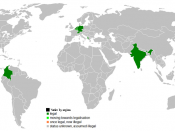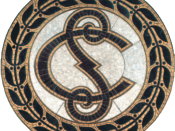Euthanasia and the Law
A severely handicapped or terminally ill person should have the right to choose to live or die. The right to live; the right to choose to live or die should not only be a right allocated for bodied individuals of sound mind but for all human beings. Euthanasia is a controversial issue which encompasses the morals, values and beliefs of our society.
Euthanasia, literally defined means 'good death'. There are two types of euthanasia, active and passive. Active euthanasia is the intentional killing of a person by medical personnel either by a lethal injection or by denying ordinary means of survival. The act of euthanasia called 'passive euthanasia', is committed by denying or withholding ordinary medical care to a patient.
.
Currently, under Canadian law euthanasia is prohibited. In Holland euthanasia has been accepted, in principle for terminally- ill patients, on request. It comes to be seen as practice for those whose 'quality of life' is judged by themselves as worthless.
Even though euthanasia is not yet legal in Holland, it is legally tolerated. Doctors are rarely prosecuted and even more rarely convicted. If euthanasia were to be decriminalized in Canada certain restrictions would have to be put into place, to ensure that a patient's rights are not infringed upon. A living will should be made when the patient is of lucid mind. Also, a council should be selected and outlined in the living will. The council should be chosen by the patient, when the patient is of sound mind and is able to make decisions. The council might consist of the patient's family, doctor or any other he or she feels have the same view or perception of life.
Presently in Canada a living will is not a legally binding document. A living will is...


